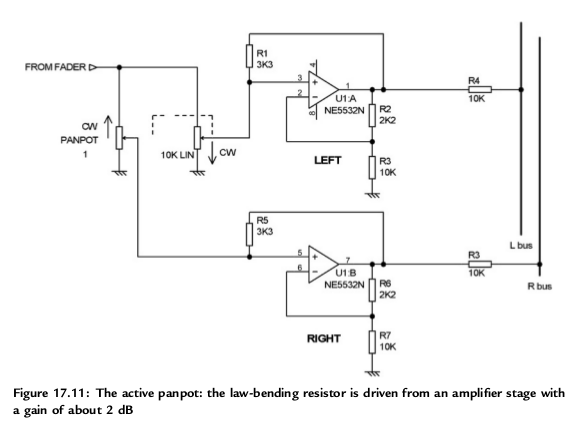electric_diaries
Well-known member
I need to pan between two control signals with as little of a hump in the middle as possible using the circuit pictured below. Ideally if there were for example 5V DC at each input, then the output would stay at a constant 5V as I moved the pot from left to right with no hump in the middle. As I understand it though there will always be a hump with this type of circuit so I was wondering if there is a way to minimise this with the resistor selection. I think the pot should be low value compared to the input and output resistors, but I'm not sure how to optimise the input and output resistors.
So in summary. Can I minimise/change the hump in the middle of this pan control with resistor selection? If so where should be large and where should be small?
Thanks!
For those wondering why I want to use this circuit when there are others better suited: I need a way to pan between two control signals with a mono pot but have two outputs. One output should have both control signals inverted, one output should have only one of the two signals inverted. I have found a way to do it with a more complicated version of the circuit above involving multi taps and inverting op-amps. But if anyone else knows of another circuit to fit this need please chime in. I also thought of VCAs but would rather not if possible.
Thanks!
So in summary. Can I minimise/change the hump in the middle of this pan control with resistor selection? If so where should be large and where should be small?
Thanks!
For those wondering why I want to use this circuit when there are others better suited: I need a way to pan between two control signals with a mono pot but have two outputs. One output should have both control signals inverted, one output should have only one of the two signals inverted. I have found a way to do it with a more complicated version of the circuit above involving multi taps and inverting op-amps. But if anyone else knows of another circuit to fit this need please chime in. I also thought of VCAs but would rather not if possible.
Thanks!




































